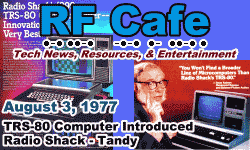|
  August 3 August 3
1492:
Christopher
Columbus set sail from Spain with a convoy of three small ships, the Nina, the
Pinta, and the Santa Maria. 1811:
Elisha Otis,
inventor of the automatic safety brake for elevators, was born. 1869:
Isaac Adams received a patent on nickel plating. 1888:
Benjamin
Franklin (BF) Goodrich, founder of America's rubber industry, died. 1900:
Firestone Tire & Rubber Co. was founded. 1921: The first
crop dusting
from an airplane occurred over a six acre grove in Troy, OH. 1926: The first traffic
lights in Britain were installed at
Piccadilly
Circus. 1958: The
Nautilus
became the first vessel to cross the North Pole underwater. 1949: The
National Basketball Association was formed. 1963: The
Beatles made their final appearance at the Cavern Club in Liverpool,
England. 1967: Morgan Chu and six others rode the entire
New York
City subway in 22 hours 11 1/2 minutes. 1977:
Radio Shack issued a press release introducing
TRS-80 computer.
1981: 13,000 air traffic controllers (PATCO) began their strike, and were ultimately fired by President
Reagan. 1994: Tokyo,
Japan recorded a temperature of 102.4 °F (39.1 °C). 2003: London
police used the
Taser electric stun gun on a suspect for the first time in England.
| Jan
| Feb | Mar |
Apr | May |
Jun | Jul |
Aug | Sep |
Oct | Nov |
Dec |
Note: These
historical tidbits have been collected from various sources, mostly on the Internet.
As detailed in
this article, there
is a lot of wrong information that is repeated hundreds of times because most websites
do not validate with authoritative sources. On RF Cafe, events with
hyperlinks have been verified. Many years ago,
I began commemorating the birthdays of notable people and events with
special RF Cafe logos.
Where available, I like to use images from postage stamps from the country where
the person or event occurred. Images used in the logos are often from open source
websites like Wikipedia, and are specifically credited with a hyperlink back to
the source where possible.
Fair Use laws permit
small samples of copyrighted content.
|










